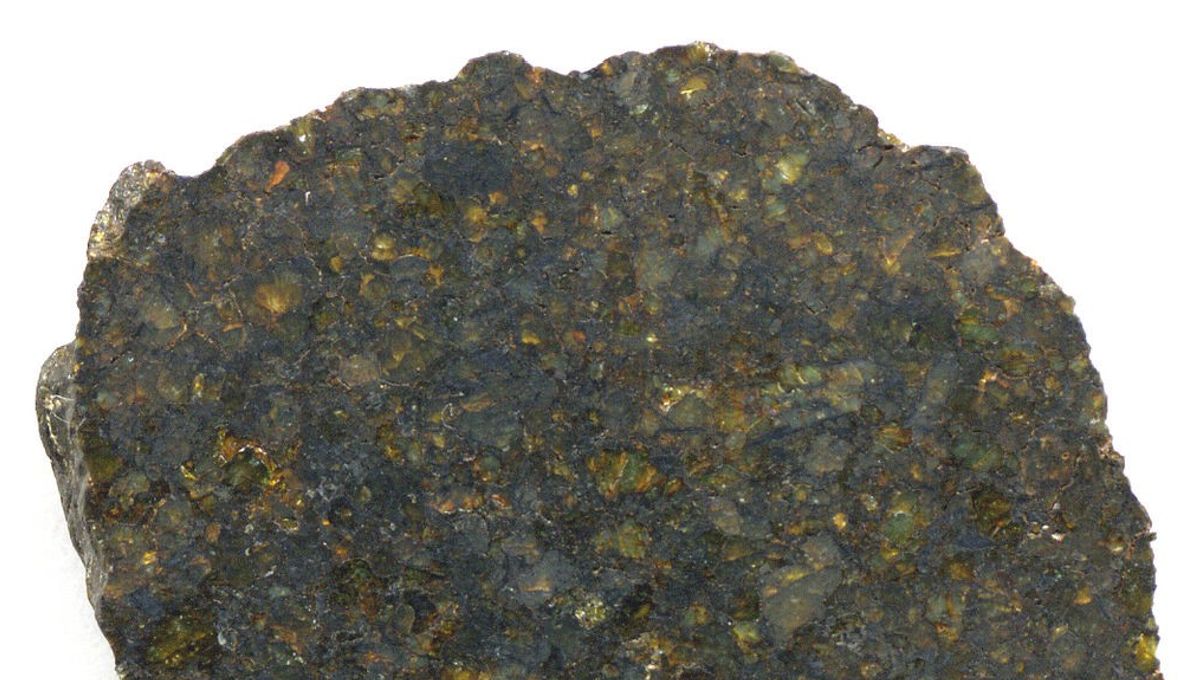
Scientists have discovered how a rare form of diamond is created in space. Found in four meteorites in north-west Africa, the strange hexagonal diamonds do not naturally occur on Earth. Now, we may know where they come from.
Billions of years ago, there was a dwarf planet in the inner Solar System that had carbon in its mantle. After a catastrophic collision with a large asteroid, that carbon was compressed into lonsdaleite, where carbon atoms are organized in a hexagonal lattice instead of the cubic structure of regular diamonds.
These lonsdaleite crystals got trapped inside ureilite meteorites, a rare form of stony space rocks that are rich in carbon, usually graphite and nanodiamond. In a new paper in the Proceedings of the National Academy of Sciences, the researchers established a connection between all these different carbon-based minerals that suggest the diamonds formed from the mantle of a long-dead dwarf planet.
They posit the graphite turned into diamond and lonsdaleite. Graphite is made of layers of carbon organized in a hexagonal grid. The team believes that the impact created a supercritical fluid made of carbon, hydrogen, oxygen, and sulfur. This interacted with graphite at high temperatures and moderate pressures which allowed the carbon to retain the hexagonal distribution of graphite, but in a 3D space, rather than in 2D layers.
“Later, lonsdaleite was partially replaced by diamond as the environment cooled and the pressure decreased,” explained lead author Professor Andy Tomkins from Monash University in a statement.
The team used advanced electron microscopy techniques to study the meteorites slice by slice, allowing them to create a series of snapshots telling the story of how lonsdaleite formed and how it was partially replaced by diamonds and graphite.
“We have also discovered the largest lonsdaleite crystals known to date that are up to a micron in size—much, much thinner than a human hair,” noted senior author Professor Dougal McCulloch from RMIT University.
Lonsdaleite is believed to be much harder than diamonds due to its structure but it has been difficult to test this until now as naturally occurring examples are very small. However, as McCulloch said, the four African meteorites featured crystals up to a micrometer, 1,000 bigger than any found before.
“Nature has thus provided us with a process to try and replicate in industry. We think that lonsdaleite could be used to make tiny, ultra-hard machine parts if we can develop an industrial process that promotes replacement of pre-shaped graphite parts by lonsdaleite,” Tomkins explained.
Lonsdaleite was named in honor of British pioneering crystallographer Kathleen Lonsdale. Together with the biochemist Marjory Stephenson, they were the first two women elected as a Fellow of the Royal Society in 1945.
Source Link: Strange Hexagonal Diamonds Crashed To Earth From Ancient Dwarf Planet